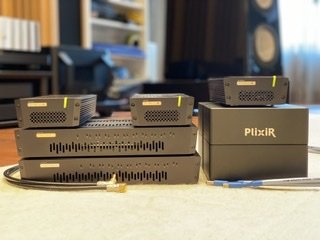I like tests, too.
I currently own a lot of network switching hubs.
This is my personal opinion of the switching hub that I recently tested.
1. SOTM sNH-10G (including sCLK-EX)
The sound is heavy.
The low-pitched expression is very good.
Complete reference of audio-level switchihg hub
View attachment 59643
2. Uptone otherREGEN
Good expression of weak sounds (music is sweet)
There is a pleasure to listen to music even in small volumes.
However, the quality of sound is poor when used for a long time due to the high heat.
(The problem seems to arise as the case follows the unique design of the uptone.
I think it would be much better if I tuned the case out loud.)
View attachment 59644
3. Telegartner M2 GOLD
Very disappointed to hear the sound of purchase.
Originally born for industrial use, it is not audio-level.
if you want to buy it, you should do it after the test.
View attachment 59645
4. GigaFOILv4 (but not a switching hub)
Connecting to the end of the SOTM sNH-10G and using it on my DIY PC.
The background is getting very dark. The noise disappears completely.
It's also industrial, but it's much more audio grade than Telegartner M2 GOLD.
I highly recommend.
And a different story.
Until the day before yesterday, I used Ch Precision t1.
I got OP21 from Cybershaft yesterday and am using it for my DAC, dCS Vivaldi Clock, SToM, and Uptone.
The purchase amount is less than one-third (including tax) of CH Precision t1, but is very good.
View attachment 59646
View attachment 59647












